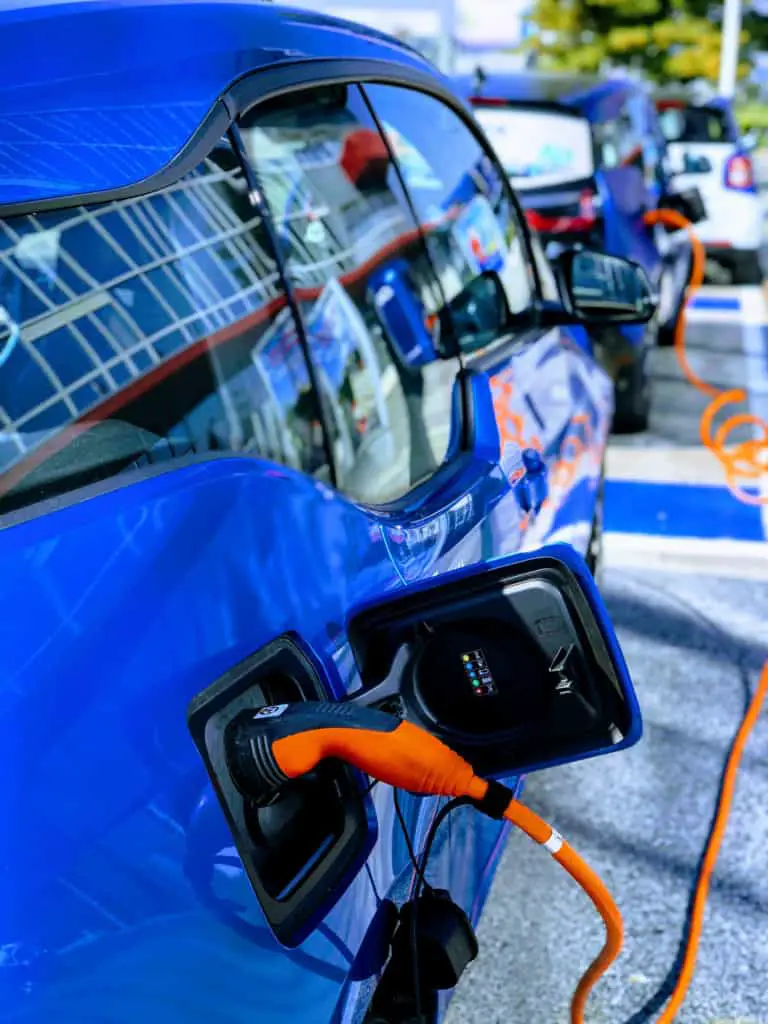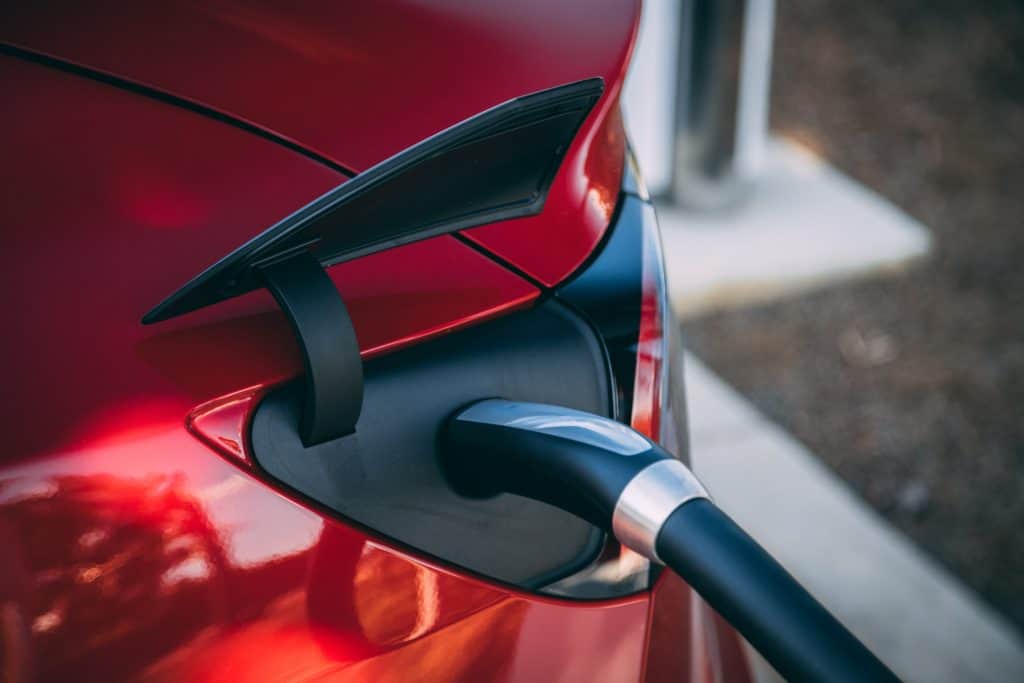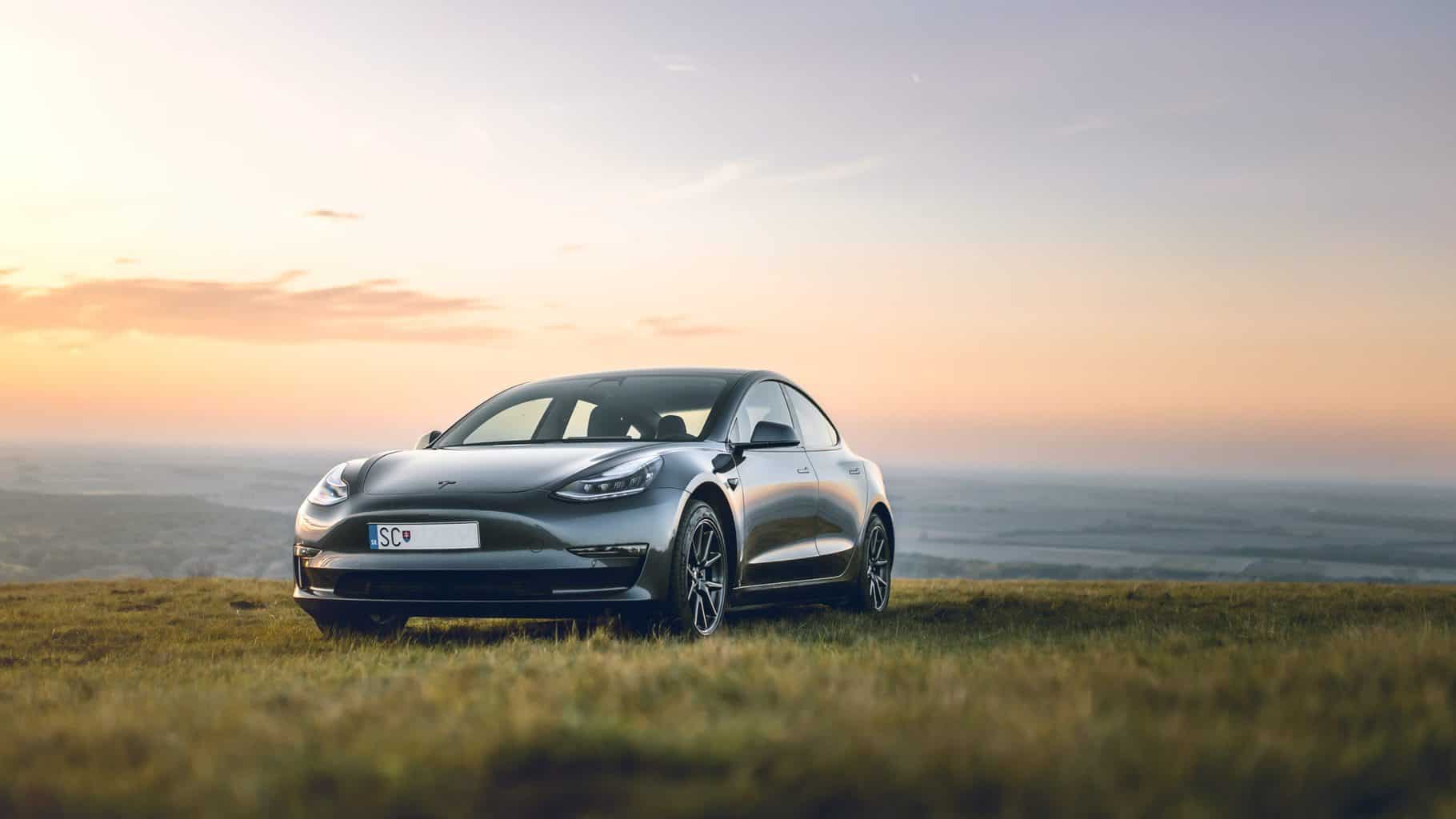What comes to mind when you think of common eco-friendly cars?
You may imagine hybrid or electric automobiles, but these vehicle types account for less than 3 percent of U.S. auto sales in 2016. Most environmentally friendly cars on the road run on gasoline, diesel, or biofuels.
The auto industry’s adapted in the face of climate change. Switching to alternative fuel sources is not your only option. You don’t need deep pockets to reduce your carbon footprint, either.
Thinking of going green and getting a new set of wheels? Before you break the bank and buy a Tesla, consider the relatively cheap eco-friendly cars on the market.
What Are Eco-Friendly Cars and How Are They Different from Other Vehicles?

For the most part, eco-friendly vehicles use non-conventional energy sources. Examples of the latter are biofuels, electricity, and even hydrogen.
Some green car builds may still partially use fossil fuels. Others may combine two environmentally friendly fuels. These machines aim for better greenhouse gas (GHG) emissions ratings.
What about conventional cars developed to give you more traveled miles per gallon (MPG)?
Some might not consider these models as green vehicles. For others, they count because they also help the environment. Conventional cars aren’t as effective as those that don’t run on fossil fuels, but at least they’re better than gas guzzlers.
What Are the Common Types of Eco-Friendly Cars?
Green vehicles aren’t created equal. Some barely make a positive impact on the environment. Others are zero-emission machines.
However, the benefits of eco-friendly cars usually outweigh any downsides. Most environmentally friendly cars do slow the pace of climate change, after all.
Vehicles that need extensive modification before attaining green status don’t appear on this list. The latter includes compressed natural gas (CNG) and propane cars.
Below are quick descriptions of eco-friendly cars available to the general public, as well as make and model examples.
1. Fuel-Efficient Conventional Vehicles

Did you know that fossil fuel cars should be phased out by 2028, according to a Greenpeace-commissioned study?
If not, climate change could cause irreparable damage to the planet. Conventional cars may be the most convenient to purchase right now, but they’re the worst for the environment, fuel-efficient or not.
If the option must be on the table though, it’s worth noting that many models benefit from cutting-edge technology. These advancements can lower emissions and refueling costs while improving mileage.
Here are two examples of fuel-efficient cars:
- The 2019 Mitsubishi Mirage is one of the cheapest high-MPG fossil fuel cars around, with a great factory warranty, too. The only downside is the lack of attention to detail when it comes to human comfort. The Mirage has awkward seating and cramped legroom.
- The 2019 Honda Fit boasts of a surprisingly spacious back seat. The first of this model’s kind came out the same year the brand retired the Honda Insight. Also known as “Jazz” in some countries, the Fit is one of several Honda models known over the past few years to easily average more than 30 MPG.
Certain physical features – like lighter weight and aerodynamic design – lessen a car’s carbon footprint, too. Choosing a diesel-powered car over a straight gasoline vehicle helps, too. The former can be up to 20 percent more fuel-efficient than the latter.
2. Biodiesel Vehicles
Biodiesel forms by putting oils through esterification, a refinement process that needs an alcohol catalyst like methanol or ethanol. Animal fat, canola oil, cooking grease, soybean oil, and sunflower oil are typical biodiesel bases.
In its pure and unadulterated form, you can call biodiesel B100. Many diesel engines can run on this without needing modifications. In the U.S., using biodiesel and diesel blends like B5 (5 percent biodiesel) and B20 (20 percent biodiesel) is common.
Here are two examples of biodiesel cars:
- The Chevrolet Cruze was one of the early diesel cars with the brand approval to run on B20. Comfortable, compact, relatively quiet and reliable, the Cruze made B20 more accessible. Too bad the Chevrolet discontinued the model in 2019.
- The Jeep Grand Cherokee runs on B20, too. Among eco-friendly family cars, this SUV is a winner. You can choose between a rear-wheel or a four-wheel drive and even upgrade to a turbocharged four-cylinder engine.
Biodiesel burns cleaner but is more expensive than diesel. Constant car drivers may notice a slight cost increase in refueling after switching to biodiesel. The biofuel can also turn to gel in low temperatures and possibly clog internal filters.
3. Flex Fuel Vehicles (FFVs)
FFVs are gasoline-powered but can run on ethanol-blended fuel effortlessly. The most common variant of the fuel is E85 (85 percent ethanol). Great organic sources for the needed refined alcohol are corn and sugarcane.
One of the most striking facts about FFVs is that car owners may not always know if their gasoline-powered car counts as one.
How can you tell if your car can handle E85? Ask your vehicle manufacturer or look it up in the owner’s manual.
Also: If you purchased your car brand new after 2008 and it features a yellow-hued gas tank cap, it’s an FFV.
Here are two examples of FFVs:
- The Nissan Frontier is one of those cheap eco-friendly cars that can still look adventure ready. If you need a vehicle for material transport or cross-country travel, this budget-friendly pickup is right up your alley.
- The Ford Escape is not always E85-capable. Its 2013 and 2014 models don’t have FFV builds. As eco-friendly family cars go, though, it’s an affordable choice if you get the right model year.
Warning: If you choose to use E85, going green while driving may cost you more. E85 is close in price to gasoline, but it’s significantly less fuel-efficient. You will likely end up spending more to cover the same distance.
Why bother with biodiesel and ethanol-gasoline blends?
Simple: It’s not so much a money-saving ploy or even an environmentally friendly one, but a way to be less dependent on fossil fuels and global trade.
Because biodiesel base oils and ethanol are both easy to source, it’s also easy to manufacture the needed fuel locally for many countries.
4. Electric Vehicles (EVs)

EVs may be one of the most popular eco-friendly cars. A recent AAA survey claims that 1 in 5 U.S. drivers will likely consider an EV for their next car purchase.
The undeniable pop culture presence of the Tesla brand and its CEO, Elon Musk, may have something to do with the widespread awareness.
Instead of a gas tank and an engine, EVs have a battery and an electric motor. These cars have zero tailpipe emissions and boast of the highest miles per gallon gasoline equivalent (MPGe).
However, charging EV batteries may possibly contribute to air pollution. The electricity has to come from somewhere, and it’s not always going to be sustainable.
For instance: If you plug your EV into a charging station – at home or on the road – and the outlet draws power from a coal plant, the source’s byproducts will harm the environment.
Here are two examples of EVs:
- The Hyundai Ioniq Electric has been the American Council for an Energy-Efficient Economy (ACEEE)’s top greenest vehicle in the U.S. for three years, since 2017. It is affordable and also comes in two different hybrid builds.
- The Tesla Model 3 is as close to budget-friendly as the brand can get. However, the standard build doesn’t come with a long-range battery and can’t reach the coveted 130 MPGe – you need to pay a lot more for that.
EVs are well-known for being much pricier and more luxurious than other eco-friendly cars, despite models like the Ioniq Electric.
There are even auto enthusiasts that commission six-figure fossil fuel-to-electric conversions from specialty shops like U.K.’s Lunaz Design.
The latter, and several auto shops like it, can expertly retrofit custom vintage vehicles with EV components and other modern conveniences.
5. Hydrogen Fuel Cell Vehicles (FCVs)
FCVs are similar to EVs conceptually, except they use hydrogen as fuel onboard. Unlike EVs, which can take longer to charge, refueling an FCV takes only minutes.
These cars burn clean with only heat and water as emissions. While they’re amazing for the environment, practical use is limited for now.
In the U.S., there are only a few FCV fueling stations in California and Hawaii as of 2020. The market is currently small.
Here are two examples of FCVs:
- The 2019 Hyundai Nexo is the first FCV to go through and ace all Insurance Institute for Highway Safety (IIHS) tests. On Hyundai’s 2020 agenda are the testing and subsequent market release of the Neptune, an FCV truck.
- The 2020 Toyota Mirai is a medium-sized sedan with an EPA-estimated driving range of over 300 miles. Quiet and comfortable, it’s one of the few FCVs available for commercial purchase in 2020.
Japan’s Ministry of the Environment is also reportedly working on a sleek and durable but lightweight hydrogen fuel cell car.
However, it’s referred to as a nano cellulose vehicle (NCV) – not an FCV – because it’s made completely out of wood.
6. Hybrid Electric Vehicles (HEVs) and Plug-In Hybrid Electric Vehicles (PHEVs)

EVs are likely the most popular of all types of eco-friendly cars, but hybrids seem to be the most attainable and easily understandable for the everyday consumer.
These vehicles have both fuel engines and battery packs, plus a needed charging port at home for PHEVs.
Depending on the model, fossil fuels or biofuels can power the engine. Most battery packs are electric-powered, but a few are hydrogen-powered.
Let’s differentiate HEVs from PHEVs: The former predates the latter and is sometimes known as the self-charging or conventional hybrid.
Unlike PHEVs, HEVs cannot recharge while plugged in at a port. They use gas engines to operate and charge their batteries, sometimes having trouble drawing from electric power alone.
You may associate the Toyota Prius with this type of green vehicle, but the more fuel-efficient HEV during the early hybrid days was actually the Honda Insight.
Starting with the original 1999 two-seater model, Honda continued to improve on the design until they discontinued the Insight in 2014.
During the Insight’s full run, its reputation as the best HEV rarely dipped. Today, nearly every major vehicle manufacturer offers multiple HEV models.
PHEVs have the same parts, but many do not operate the way HEVs do.
Often, these models can use gas power and electricity at the same time to power themselves as their batteries charge. As long as you keep the gas tank filled, you won’t need to plug in your PHEV.
Here are two examples of hybrid cars:
- The Toyota Prius is the iconic hybrid model for a good reason. The original 1997 four-door sedan Prius was the first-ever mass-produced HEV. It was also one of the first hybrids to offer intelligent all-wheel drive (AWD). The Prius remains the top-selling HEV to this day, although sales have steadily declined since 2012.
- The Kia Niro enjoyed a boost in publicity in 2019 when the brand ran an ad campaign for the model featuring actor Robert De Niro:
Available in EV, HEV, and PHEV form, the latter is particularly impressive. Why? Fuel economy is great even when the Niro PHEV isn’t charged, easily maintaining 60 MPG.
Another way to use PHEVs is to plug them in to completely recharge. Because these machines can take hours to do so, charging overnight is a typical routine.
Once fully juiced up, some PHEVs can operate on electricity only with zero emissions. When the battery pack runs out, the fuel engine kicks in, provided the gas tank isn’t empty.
Gasoline provides the needed power to keep the vehicle going, almost as a last resort.
To travel further distances between recharging periods, you can add larger and non-standard battery packs to the car. These extra parts can add a lot to the PHEVs’ price tags – sometimes thousands of dollars more than the base cost.
Aside from Driving an Eco-Friendly Car, What Else Can You Do to Promote a Sustainable Lifestyle?
Stick with the Sustainable Citizen to find out the many ways you can practice a more eco-conscious lifestyle.
You can practice mindfulness when you cook, eat, purchase, and consume. Veganism may speak to your personal principles, as well as supporting only fair trade or sustainable brands and organizations. Green living habits like recycling and proper waste disposal can extend to your workplace and even your home.
Sign up for our free newsletter and receive updates and helpful content about eco-friendly living and green products.
You Might Also Like…
- Is Fast Food Bad for the Environment? (& What You Can Do)
- Is Fabric Softener Bad for the Environment? (+5 Eco-Friendly Options)
- Is Fuel Dumping Bad for the Environment? (& How Often It Happens)
- Is Electricity Generation Bad for the Environment? (What You Should Know)
- Is Dry Cleaning Bad for the Environment? (4 Surprising Facts)
- Is Diamond Mining Bad for the Environment? (Important Facts)
- Is DEET Bad for the Environment? 4 Effects (You Should Know)
- Is Cat Litter Bad for the Environment? (5 Common Questions)
- Is Burning Cardboard Bad for the Environment? (6 Facts)
- Is Burning Paper Bad for the Environment? (6 Surprising Facts)
- Is Burning Leaves Bad for the Environment? (7 Quick Facts)
- 4 Natural Cleaners for Quartz Countertops
- 6 Eco-Friendly Acrylic Paint Brands (For Sustainable Artists)
- 5 Eco-friendly Alternatives to Acrylic Paint (& How to Make Them)
- Is Acrylic Paint Bad for the Environment? (7 Quick Facts)
- Is Acrylic Yarn Bad for the Environment? 8 Crucial Facts
- Is Acrylic Bad for the Environment? (8 Quick Facts)
- Is Aluminum Foil Bad for the Environment? 7 Quick Facts
- Is Bleach Bad for the Environment? 6 Crucial Facts
- Is Lithium Mining Bad for the Environment? 6 Crucial Facts































